![]()
![]()
![]()
Use LEFT and RIGHT arrow keys to navigate between flashcards;
Use UP and DOWN arrow keys to flip the card;
H to show hint;
A reads text to speech;
42 Cards in this Set
- Front
- Back
|
Common patterns in coma states |
Lethargic Stuporous Light coma Profound coma |
|
|
Lethargic in EEG |
Mild to moderate slowing Theta may be background or theta/alpha mix EEG is reactive, increased frequencies seen |
|
|
Stuporous in EEG |
More delta slowing seen May still see alpha when fully alerted |
|
|
Light coma in EEG |
Diffuse delta, EEG responsive to tactile or auditory stimulation |
|
|
Profound coma in EEG |
Diffusely abnormal, may be burst suppression or ECI |
|
|
Slowing: 3 patterns |
1. Background slowing without diffuse theta or delta 2. Diffuse theta and delta with normal background 3. Slow background with diffuse theta and delta |
|
|
In general, slow background indicates... |
Cortical dysfunction |
|
|
In general, the delta-theta slow waves signify... |
White matter disease |
|
|
In general, if there is a slow background and theta/delta, it indicates... |
Dysfunction of both |
|

? |
Background slowing without diffuse delta |
|

? |
Normal background with delta intermixed |
|
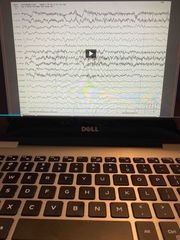
? |
Slow background and theta/delta |
|
|
Delta coma |
Widespread delta without theta or alpha background High voltage with or without reactivity to stimuli Low voltage, typically non-reactive |
|

? |
Diffuse delta with theta background |
|
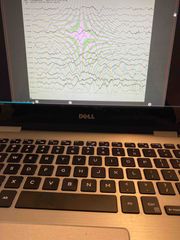
? |
Delta coma, high amplitude |
|
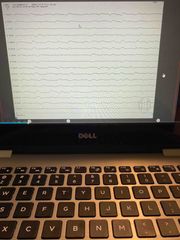
? |
Delta coma, worse because low amp and low reactivity |
|
|
Alpha coma |
Abundant alpha activity Diffuse or anterior dominant Non-reactive to external stimuli Little to no slow activity Poor prognosis Most commonly seen with brain stem lesions, severe trauma Transitional pattern to low voltage pattern, burst suppression, and ECI |
|
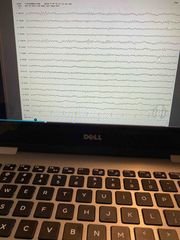
? |
Alpha coma |
|
|
Theta coma |
Similar to alpha coma but slightly slower waveforms Brief suppression’s seen Also very poor prognosis May see in transition to alpha coma |
|
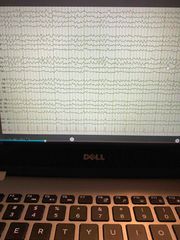
? |
Theta coma |
|
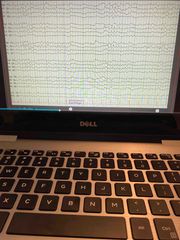
?apindle |
Suppression with tactile stimulation- not a good thing but better than seeing no change what so ever |
|
|
Spindle coma |
Diffuse slow with spindle activity seen Components may be more frontal V-waves and K-complexes also seen Most commonly seen with traumatic brain injury Others such as anoxia, viral encephalitis, subarchanoid hemorrhage, drug intoxication Better prognosis with k-complexes seen- reactive Patient is not arousable Typically better prognosis than other coma types, may see as cerebral function is improving |
|
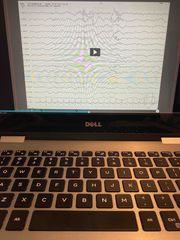
? |
Spindle coma |
|
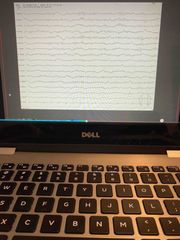
? |
Spindle coma with propofol infusion |
|
|
What does the EEG show with brain death? |
Shows no cerebral activity over 2 uV when recording from scalp electrode pairs 10 or more centimeters apart |
|
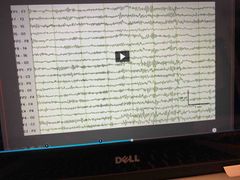
? |
Beta coma |
|
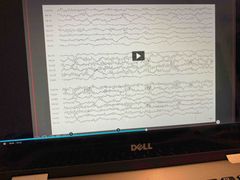
? |
Beta with sedation |
|
|
? |
Spindle coma with propofol infusion |
|
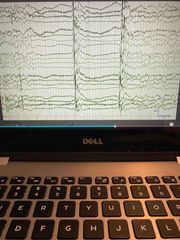
? |
Burst suppression |
|
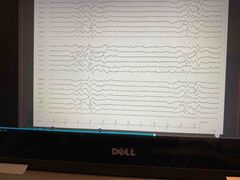
? |
Burst suppression |
|
|
? |
Beta with sedation |
|
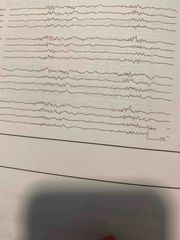
? |
Burst suppression with sedation |
|
|
? |
Burst suppression |
|
|
? |
Burst suppression |
|
|
Burst suppression may also be seen with... |
Sedation during procedures or surgical monitoring. Medically induced coma may be required with refractive SE -neurologist wants a burst every 5-10 second -burst suppression is maintained for a period of time -pentobarbital, midazolam used |
|

? |
ECI |
|

? |
Low voltage EEG |
|

? |
IV drip artifact |
|
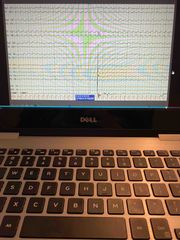
? |
Stimulating patient |
|
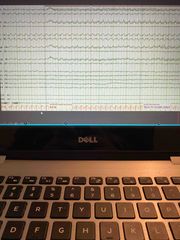
? |
Photo cell artifact |
|
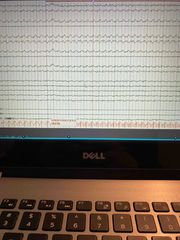
? |
Artifact improved |
|
|
Electrocerebral inactivity |
Must rule out causes for reversible ECI -hypothermia(<32C, more likely <20C) -barbiturate or sedative drug intoxication -sever metabolic derangements |

